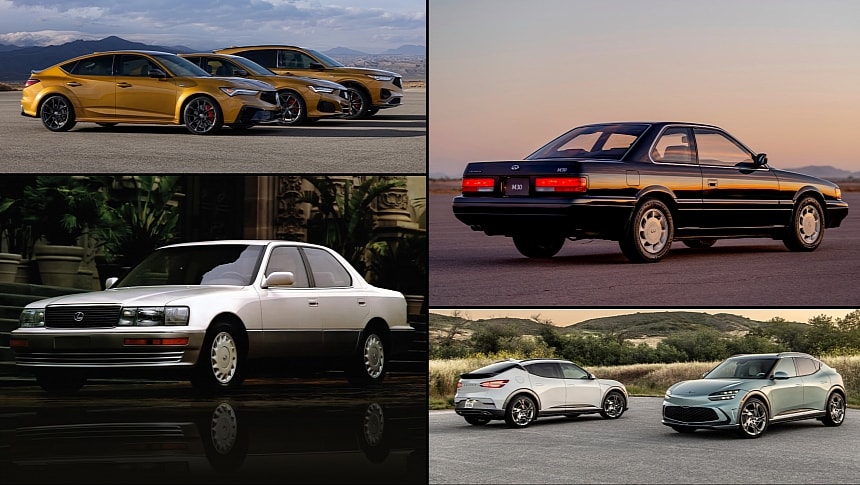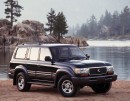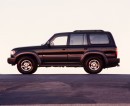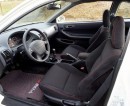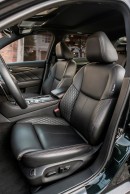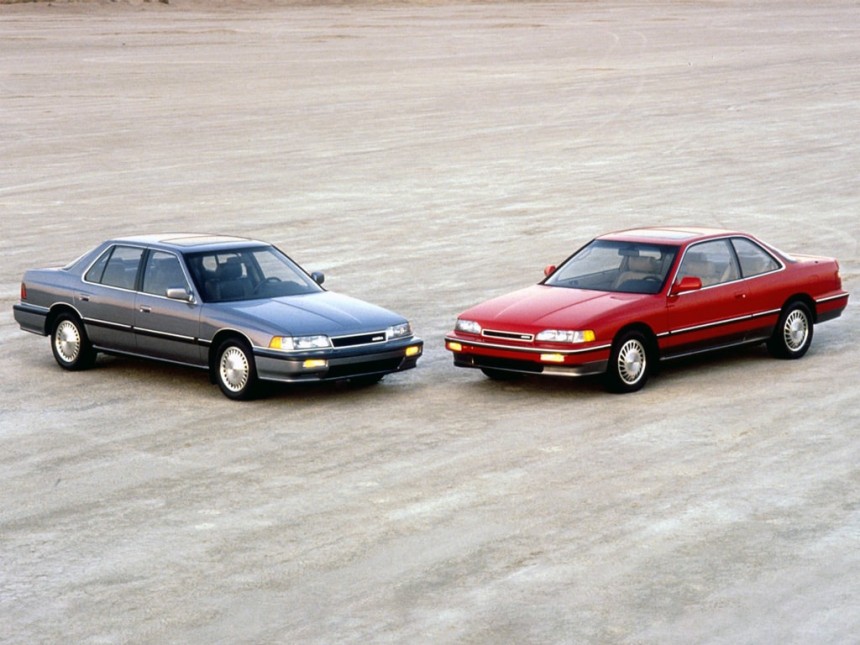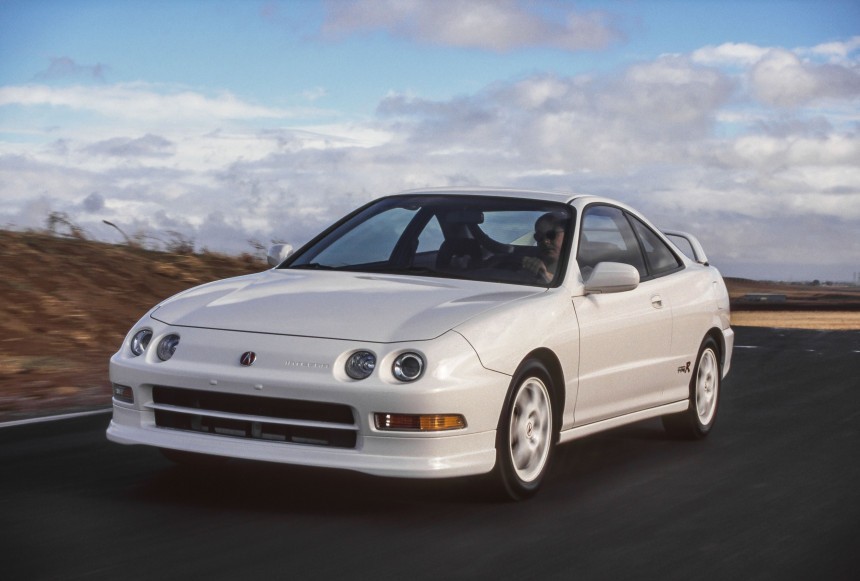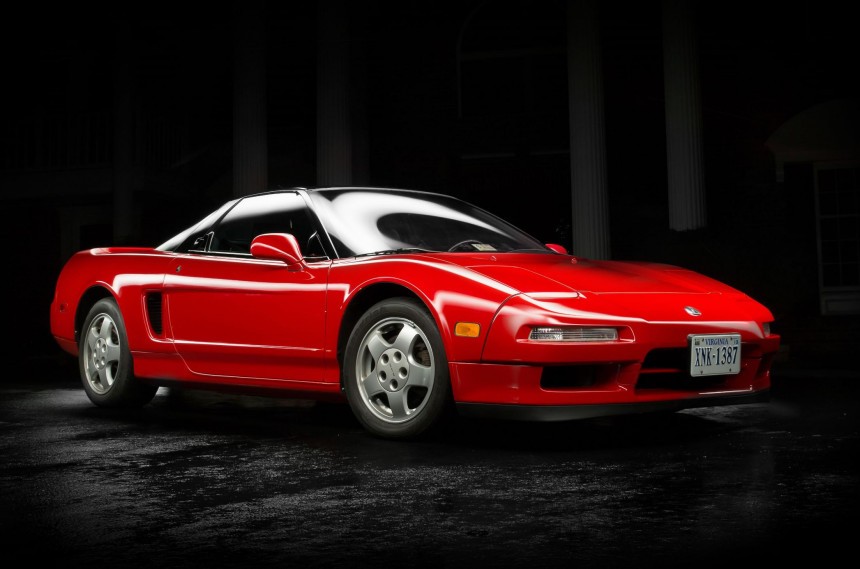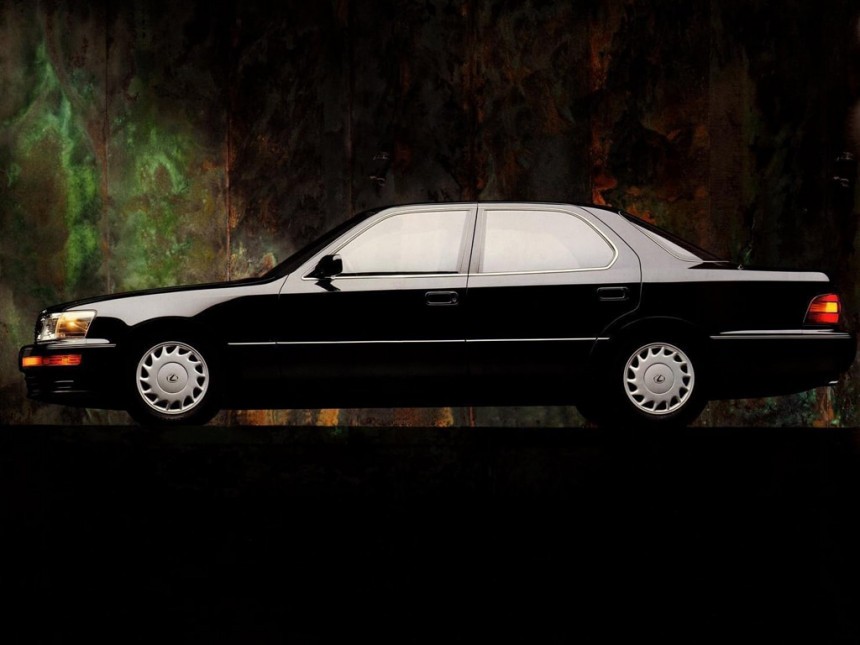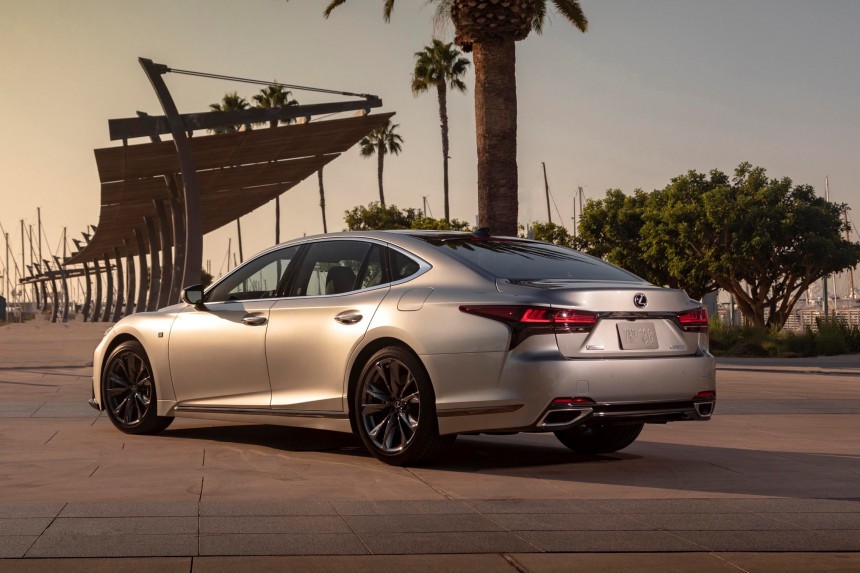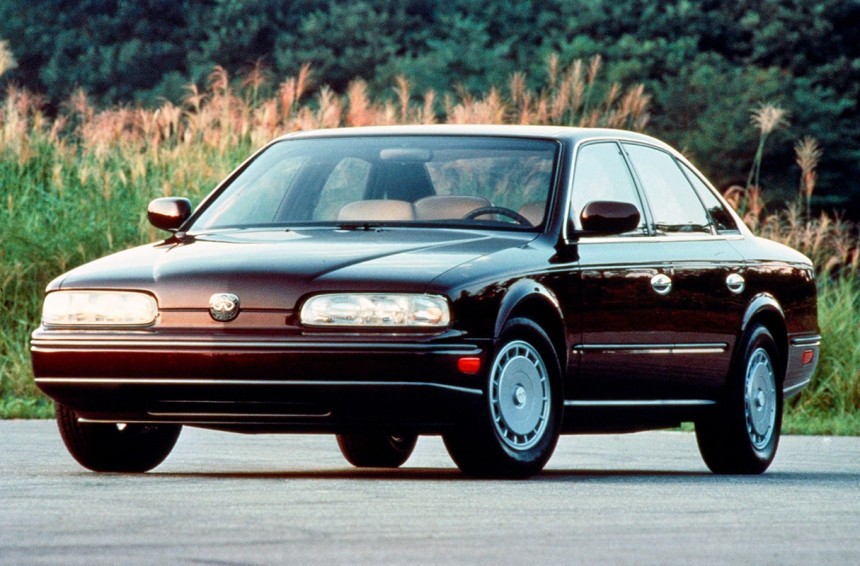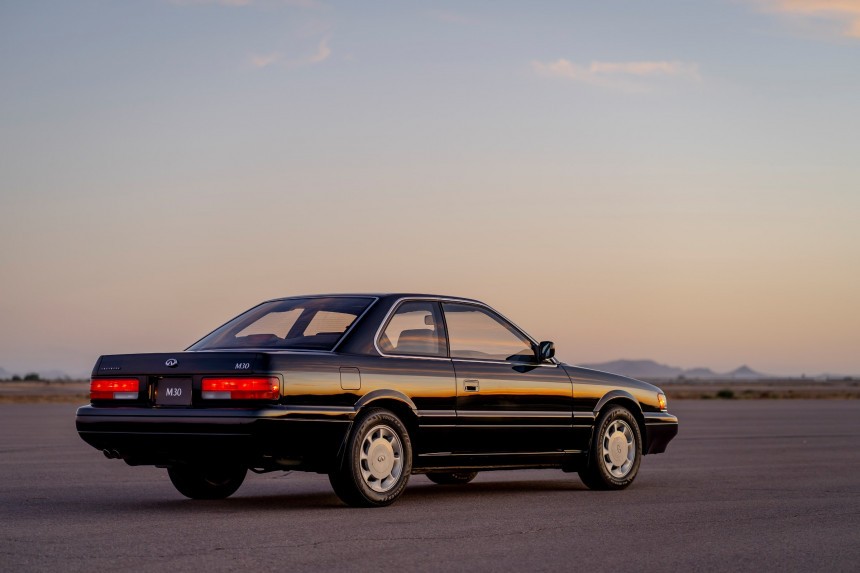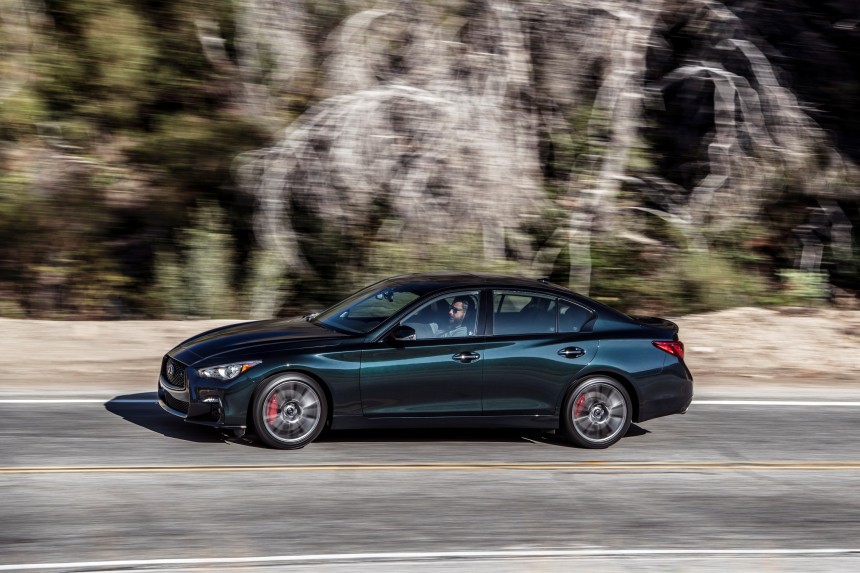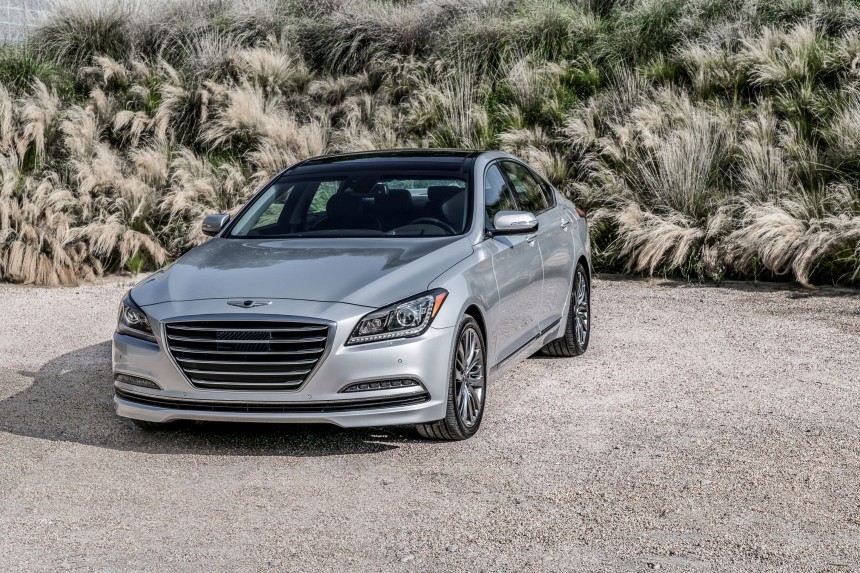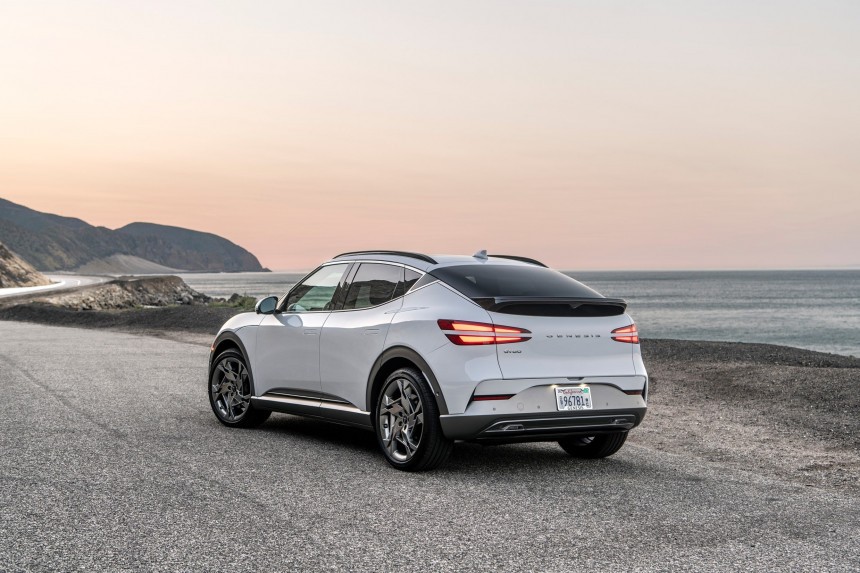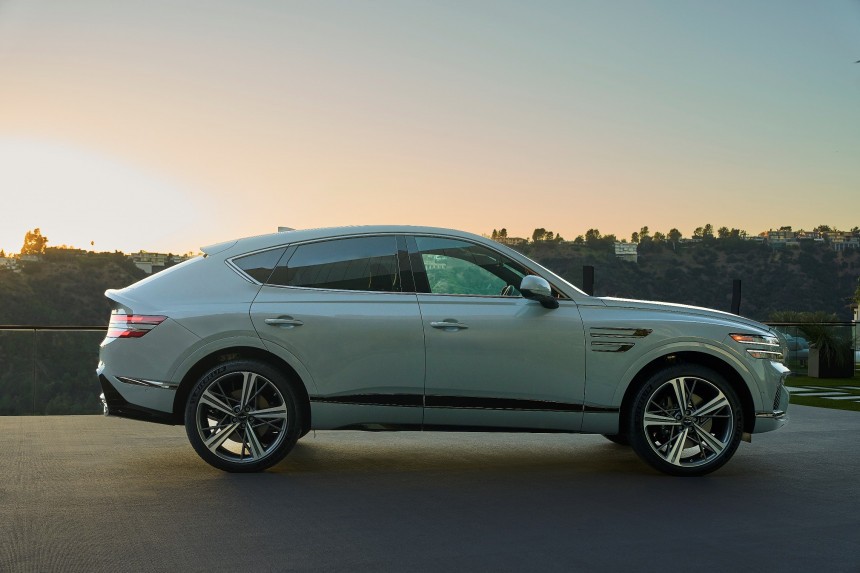Luxury automobiles can trace their roots back to the late 1800s, an era during which the self-propelled carriage targeted the most affluent of people. The luxury car segment took a turn for the mainstream in the period after Oldsmobile introduced the world's first mass-produced automobile (the Curved Dash) in 1901. The Ford Motor Company perfected this concept a decade earlier with the moving assembly line, which allowed the Dearborn-based automaker to lower the retail price of the Model T.
Widely regarded as the first modern car, the Mercedes 35 PS was introduced by Daimler-Motoren-Gesellschaft at the turn of the 20th century. The 35 PS (make that 34.5 horsepower) also happens to be the first Mercedes-branded production car. BMW and Audi became direct rivals to the Stuttgart-based automaker much later.
Back in the olden days, there were a plethora of luxury marques. Unfortunately, many were discontinued with a whimper rather than a bang. Looking at the glass half full, a handful of has-beens were resurrected by more financially stable automakers. Romano Artioli's revival of Bugatti comes to mind, which saw the French automaker return as an Italian supercar manufacturer. The Volkswagen Group took Bugatti to the next level in the 2000s, but also returned the company to Molsheim. From 1871 to 1919 and from 1940 to 1944, the French town was controlled by Germany.
In terms of commercial success, the German triumvirate comprising Mercedes, BMW, and Audi leads the luxury segment nowadays. In the 1980s, three Japanese automakers decided to challenge the status quo with their own luxury brands. Long after Lexus, Acura, and Infiniti established themselves in the luxury segment, Genesis was spun off from Hyundai with the intent of chipping away at them and the German marques. But first, let's kick off with the oldest of the three Asian luxury brands.
The 1960s are remembered for the Summer of Love, Civil Rights Movement, and the Vietnam War. The 1980s, by comparison, are widely regarded as the decade of greed. It's only natural, then, that all three Asian luxury brands were introduced during this epoch of untold excess on Wall Street and at the Tokyo Stock Exchange.
Acura can trace its roots back to the late 1970s, when Honda decided to expand its manufacturing footprint with a factory in the United States of America. Come 1981, the Japanese company founded by Soichiro Honda was hard at work developing a luxurious sedan with sporting credentials. Slotted above the Accord, the Legend was originally intended to wear Honda badges.
America's improving economy and increasing sales for Mercedes and BMW in the United States market forced the Japanese automaker to rethink the Legend's rollout. Also remember that Japanese cars were revered for their pricing and reliability instead of luxury and technology. Given these circumstances, America's middle class was fully prepared to welcome an all-new luxury marque.
Sold as the Honda Legend in the Land of the Rising Sun, the Acura Legend came out for the 1986 model year. It was nearly twice as expensive as the Honda Accord, namely $19,898 as opposed to $8,429. Adjusted for inflation, those prices convert to $57,035 and $24,160, respectively, in 2024 dollars.
For reference, the larger and posher Mercedes-Benz 300E was $34,700 for the 1986 model year. The W210 E-Class replaced the 124 series. Over in the United States, the most affordable Merc E-Class on sale today is the E 350 4MATIC at $62,300. It's a staggering difference over the 300E, but then again, the 214 and 124 series are very, very different cars.
Turning our attention back to Acura, the luxury division was originally designated Channel II. The Acura moniker was coined in 1984, then dealership selection followed in 1985. From the very beginning, Acura was advertised with an emphasis on luxury and performance, which are best encapsulated by the brand's tagline: Precision Crafted Performance. Offered in sedan and coupe flavors, the Legend was joined by the 1986 Integra.
Acura's third series-production model was the NSX, a mid-engine sports car that was famously developed with the help of a Brazilian gentleman by the name of Ayrton Senna. The performance target for the NSX was the Ferrari 328. Offered between the 1991 and 2005 model years, the first-gen NSX sold in the ballpark of 18,000 examples worldwide.
The second coming wasn't exactly successful. Including the limited-run Type S, second-gen NSX production totaled a little over 2,900 units. The Prancing Horse assembled well over 10,000 examples of the 488 between 2015 and 2019, of which the Pista is believed to number in the 3,500s.
Even though Honda stopped making the NSX, the Acura brand offers no fewer than four go-faster machines for model year 2024. Think Integra Type R, TLX Type S, MDX Type S, and the all-electric ZDX Type S. The posher division sold a grand total of 145,655 vehicles in the United States last year, of which the MDX accounted for 57,599 deliveries.
Acura's dealership network pales in comparison to that of Lexus. The United States of America is the brand's largest market, with Lexus moving 320,249 vehicles in 2023 as opposed to 258,704 in 2022. Before going further, it should be mentioned that Lexus slots above Toyota yet below the Century line. Once limited to an ultra-luxury sedan, the Century line now includes a full-size crossover with similar underpinnings to the Grand Highlander.
Internally referred to as G60, the Century sedan retails at 20,080,000 yen or 133,785 dollars at current exchange rates. The Century SUV is referred to as the G70 and starts at ¥25,000,000 (around $166,565). Insane money, for sure! At ¥10,940,000 ($72,890) and ¥12,500,000 ($83,280), respectively, the LS and LX seem like good deals.
The LX dropped in 1995 for the 1996 model year as the Land Cruiser's luxurious cousin, but the LS made Lexus a household name. It all started in 1983 with a secret meeting in Japan between chairman Eiji Toyoda and handpicked engineers, designers, and strategists. The brief was pretty straightforward, as in creating a luxury car that wouldn't only challenge Mercedes, but completely shame the W126 S-Class in terms of plushness and refinement.
It's hard to believe that Lexus actually created a plusher and more refined car than the 140 series, which replaced the W126 in 1991. However, do bear in mind that Toyota spent more than a billion dollars on research & development for the first-generation LS. A billion 1980s dollars, that is…
Initially known as the F1 project, the LS 400 wouldn't have been possible without 2,300-odd technicians, 1,400 engineers, and 60 designers. Toyota produced in the ballpark of 450 prototypes prior to the production spec's debut at the North American International Auto Show in early 1989.
In the first instance, Toyota sold the LS 400 stateside through 81 dealers. The ES 250 followed suit, a mid-sized luxury sedan based on the V20 Camry. Almost 3,000 units of the LS 400 were sold in the first month on sale. Lexus expanded to Europe in 1990, then launched the SC 400 in 1991.
A hugely successful brand, Lexus broke its sales record in 2023 by moving 824,258 automobiles in more than 90 countries. Care to guess which is the largest market of them all? Of course, North America leads the ranking with 355,606 units in 2023 compared to 236,587 for Asia, of which 181,411 were delivered in China. The brand's home market accounted for 94,647 deliveries, Europe for 69,202, and the Middle East for 46,472 deliveries.
824,258 may be a helluva lot of luxury cars and sport utility vehicles, yet Audi sold approximately 1.9 million automobiles last year. Mercedes-Benz Cars ended 2023 with 2,044,100 deliveries to its name, whereas BMW sold 2,253,835 automobiles.
Going forward, Toyota hopes that Lexus will reach 1 million deliveries by 2030. A very conservative target, indeed, but it's better to be safe than sorry. Being the largest automaker in the world (11.2 million vehicles sold on a global level in 2023), Toyota cannot afford to overpromise and underdeliver. It already did that with the bZ4X and technically similar RZ, which calls for much superior battery-electric vehicles by the year 2030.
The LS 400 started production at the Tahara plant in May 1989. Nissan-owned Infiniti started selling vehicles in November 1989, and to this day, North America remains the brand's most important market. Headquartered in Yokohama's Nishi-ku district, Infiniti was masterminded by the Horizon Task Force. Assembled in 1985, the group had to create a luxurious yet performance-oriented brand.
At the present moment, Infiniti slots below the other two members of the Japanese triumvirate. This can be attributed to Nissan's notoriously poor build quality, which can be traced back to the Carlos Ghosn era. He became Nissan's COO in 1999, president in 2000, and served as CEO from 2001 through his arrest in 2018. Lest we forget, the Japanese automaker might have gone bust had it not been for Renault purchasing 36.8 percent of Nissan's outstanding stock in 1999. This created the Renault-Nissan Alliance, a colossus that eventually turned into the Renault-Nissan-Mitsubishi Alliance after Mitsubishi was found to have falsified the fuel economy ratings of 625,000 cars. Of those, nearly 470,000 were produced by Mitsubishi for Nissan.
Ghosn's aggressive cost-cutting measures helped Nissan weather the storm, with said cost-cutting measures applied to Mitsubishi as well. Remember the Colt and ASX? Now they're nothing more than badge-engineered equivalents to the Renault Clio subcompact hatchback and the Captur crossover. Adding insult to injury, the next-gen Pajero is rumored to debut in 2027 as a Mitsubishi Outlander Plug-In Hybrid with slightly different styling and a nicer interior. Gee, how the mighty have fallen…
In the beginning, Infiniti comprised two nameplates: Q45 and M30. The former is a full-size sedan based on the Nissan President, whereas the second and third generations are twinned with the Nissan Cima. The Q45 would be indirectly replaced by the Q70, a front-biased sedan that failed miserably in the US market. Its best year was 2015, when Infiniti reported a meager 8,449 deliveries. The S-Class, by comparison, moved 21,934 units.
The M in M30 stands for mid-size luxury car. US market sales topped 21,884 units in 2007, the year BMW sold 54,142 examples of the 5 Series in the United States. The Infiniti brand stepped into the sport utility vehicle arena with the Nissan Pathfinder-based QX4. The body-on-frame SUV would receive the VQ-series V6 in 2000 for the 2021 model year. The third millennium also saw the introduction of the unibody FX and larger QX56.
The latter was renamed to QX80 in 2013 for model year 2014. While still powered by a 5.6-liter V8, the QX80 will switch to a twin-turbocharged V6 on March 20. The next generation is also getting the nine-speed automatic of the Titan, Frontier, and Z.
Infiniti's current lineup is the slimmest of the three Asian luxury brands we've talked about thus far, comprising the QX80, QX60, QX55, QX50, and Q50. The latter is expected to be replaced by an electric sedan no later than 2026, with the Vision Qe serving as a preview for the zero-emission sedan.
As of March 2024, the Acura lineup also numbers five nameplates. Be that as it may, the Infiniti division sold 64,699 units in the United States of America last year. A stark contrast from the Acura division's 145,655 deliveries, which goes to show that Infiniti needs a makeover as soon as possible.
Unfortunately, the makeover in question is focused on electrification, a product strategy that hardly differs from those of Acura and Lexus. Even more unfortunately, Infiniti doesn't have an EV to call its own despite Nissan's extensive EV know-how.
Genesis sold a million vehicles between November 2015 and September 2023, putting it well below the Japanese competition. There is, however, a catch. Genesis reached the half-million mark in May 2021, meaning that global sales clocked half a million sales in the span of 28 months. With Genesis growing at such a rapid pace, both Infiniti and Acura should pay attention to the South Korean marque.
As far as electric vehicles are concerned, Genesis has a huge advantage over its direct competitors due to Hyundai's E-GMP and the upcoming eM platform. Infiniti could turn to Nissan and Renault, whereas Acura relies on GM for EV tech and production for the time being. Toyota-backed Lexus has big plans for the future, but in the meantime, the disappointing RZ is the brand's only EV in the US.
Genesis was intended to launch much sooner than 2015, yet the global financial crisis of 2007 spooked the higher-ups at Hyundai. The automaker had invested millions of dollars into the production versions of two concepts. Rather than losing money, Hyundai compromised by reimagining said concepts as the Hyundai Genesis sedan and coupe.
The standalone brand advertises no fewer than eight models in the US as of March 2024, of which the Electrified G80 and Electrified GV70 are considered separate models from the combustion-engined G80 and GV70. Not long now, the lineup will grow to nine models. The GV80 Coupe is best described as the South Korean alternative to the BMW X6, which – curiously enough – is made in the United States. The Mercedes-Benz GLE Coupe is manufactured in the Land of the Free as well.
Both in South Korea and the United States of America, the plan is to become fully electric by 2030. A tall order in every respect, and knowing the automotive industry, it's also likely that Genesis won't keep its promise. Mercedes once touted that it's going 100 percent electric in 2030 where market conditions allow, yet backed off this ambitious plan in February 2024 due to market conditions that favor internal combustion and hybrid vehicles.
With so many people hedging their bets on hybrids and plug-in hybrids while the charging infrastructure gets built and battery tech gets better, it's no wonder that Mercedes couldn't keep its promise. EV subsidies also need to be mentioned, especially for the less affluent buyers among us.
Similar to Infiniti, the Genesis brand targets the less affluent as well. The G70 and Q50 are the best examples in this regard, with Genesis and Infiniti asking $41,500 and $43,050 from the outset. The GV70 is the second most affordable Genesis available to configure today, with prices kicking off at $45,150 (sans the $1,350 destination charge).
At the other end of the spectrum, the G90 starts at $89,200 with standard all-wheel drive, Nappa leather upholstery, a panoramic sunroof, power front seats with massage function, heated rear seats, and 12.3-inch touchscreen infotainment. The only notable option is the E-Supercharged version, which carries a starting price of $99,500 for MY2024.
Back in the olden days, there were a plethora of luxury marques. Unfortunately, many were discontinued with a whimper rather than a bang. Looking at the glass half full, a handful of has-beens were resurrected by more financially stable automakers. Romano Artioli's revival of Bugatti comes to mind, which saw the French automaker return as an Italian supercar manufacturer. The Volkswagen Group took Bugatti to the next level in the 2000s, but also returned the company to Molsheim. From 1871 to 1919 and from 1940 to 1944, the French town was controlled by Germany.
In terms of commercial success, the German triumvirate comprising Mercedes, BMW, and Audi leads the luxury segment nowadays. In the 1980s, three Japanese automakers decided to challenge the status quo with their own luxury brands. Long after Lexus, Acura, and Infiniti established themselves in the luxury segment, Genesis was spun off from Hyundai with the intent of chipping away at them and the German marques. But first, let's kick off with the oldest of the three Asian luxury brands.
Acura (founded by Honda in 1986)
Acura can trace its roots back to the late 1970s, when Honda decided to expand its manufacturing footprint with a factory in the United States of America. Come 1981, the Japanese company founded by Soichiro Honda was hard at work developing a luxurious sedan with sporting credentials. Slotted above the Accord, the Legend was originally intended to wear Honda badges.
America's improving economy and increasing sales for Mercedes and BMW in the United States market forced the Japanese automaker to rethink the Legend's rollout. Also remember that Japanese cars were revered for their pricing and reliability instead of luxury and technology. Given these circumstances, America's middle class was fully prepared to welcome an all-new luxury marque.
For reference, the larger and posher Mercedes-Benz 300E was $34,700 for the 1986 model year. The W210 E-Class replaced the 124 series. Over in the United States, the most affordable Merc E-Class on sale today is the E 350 4MATIC at $62,300. It's a staggering difference over the 300E, but then again, the 214 and 124 series are very, very different cars.
Turning our attention back to Acura, the luxury division was originally designated Channel II. The Acura moniker was coined in 1984, then dealership selection followed in 1985. From the very beginning, Acura was advertised with an emphasis on luxury and performance, which are best encapsulated by the brand's tagline: Precision Crafted Performance. Offered in sedan and coupe flavors, the Legend was joined by the 1986 Integra.
The second coming wasn't exactly successful. Including the limited-run Type S, second-gen NSX production totaled a little over 2,900 units. The Prancing Horse assembled well over 10,000 examples of the 488 between 2015 and 2019, of which the Pista is believed to number in the 3,500s.
Even though Honda stopped making the NSX, the Acura brand offers no fewer than four go-faster machines for model year 2024. Think Integra Type R, TLX Type S, MDX Type S, and the all-electric ZDX Type S. The posher division sold a grand total of 145,655 vehicles in the United States last year, of which the MDX accounted for 57,599 deliveries.
Lexus (founded by Toyota in 1989)
Internally referred to as G60, the Century sedan retails at 20,080,000 yen or 133,785 dollars at current exchange rates. The Century SUV is referred to as the G70 and starts at ¥25,000,000 (around $166,565). Insane money, for sure! At ¥10,940,000 ($72,890) and ¥12,500,000 ($83,280), respectively, the LS and LX seem like good deals.
The LX dropped in 1995 for the 1996 model year as the Land Cruiser's luxurious cousin, but the LS made Lexus a household name. It all started in 1983 with a secret meeting in Japan between chairman Eiji Toyoda and handpicked engineers, designers, and strategists. The brief was pretty straightforward, as in creating a luxury car that wouldn't only challenge Mercedes, but completely shame the W126 S-Class in terms of plushness and refinement.
Initially known as the F1 project, the LS 400 wouldn't have been possible without 2,300-odd technicians, 1,400 engineers, and 60 designers. Toyota produced in the ballpark of 450 prototypes prior to the production spec's debut at the North American International Auto Show in early 1989.
In the first instance, Toyota sold the LS 400 stateside through 81 dealers. The ES 250 followed suit, a mid-sized luxury sedan based on the V20 Camry. Almost 3,000 units of the LS 400 were sold in the first month on sale. Lexus expanded to Europe in 1990, then launched the SC 400 in 1991.
824,258 may be a helluva lot of luxury cars and sport utility vehicles, yet Audi sold approximately 1.9 million automobiles last year. Mercedes-Benz Cars ended 2023 with 2,044,100 deliveries to its name, whereas BMW sold 2,253,835 automobiles.
Going forward, Toyota hopes that Lexus will reach 1 million deliveries by 2030. A very conservative target, indeed, but it's better to be safe than sorry. Being the largest automaker in the world (11.2 million vehicles sold on a global level in 2023), Toyota cannot afford to overpromise and underdeliver. It already did that with the bZ4X and technically similar RZ, which calls for much superior battery-electric vehicles by the year 2030.
Infiniti (founded by Nissan in 1989)
At the present moment, Infiniti slots below the other two members of the Japanese triumvirate. This can be attributed to Nissan's notoriously poor build quality, which can be traced back to the Carlos Ghosn era. He became Nissan's COO in 1999, president in 2000, and served as CEO from 2001 through his arrest in 2018. Lest we forget, the Japanese automaker might have gone bust had it not been for Renault purchasing 36.8 percent of Nissan's outstanding stock in 1999. This created the Renault-Nissan Alliance, a colossus that eventually turned into the Renault-Nissan-Mitsubishi Alliance after Mitsubishi was found to have falsified the fuel economy ratings of 625,000 cars. Of those, nearly 470,000 were produced by Mitsubishi for Nissan.
Ghosn's aggressive cost-cutting measures helped Nissan weather the storm, with said cost-cutting measures applied to Mitsubishi as well. Remember the Colt and ASX? Now they're nothing more than badge-engineered equivalents to the Renault Clio subcompact hatchback and the Captur crossover. Adding insult to injury, the next-gen Pajero is rumored to debut in 2027 as a Mitsubishi Outlander Plug-In Hybrid with slightly different styling and a nicer interior. Gee, how the mighty have fallen…
The M in M30 stands for mid-size luxury car. US market sales topped 21,884 units in 2007, the year BMW sold 54,142 examples of the 5 Series in the United States. The Infiniti brand stepped into the sport utility vehicle arena with the Nissan Pathfinder-based QX4. The body-on-frame SUV would receive the VQ-series V6 in 2000 for the 2021 model year. The third millennium also saw the introduction of the unibody FX and larger QX56.
The latter was renamed to QX80 in 2013 for model year 2014. While still powered by a 5.6-liter V8, the QX80 will switch to a twin-turbocharged V6 on March 20. The next generation is also getting the nine-speed automatic of the Titan, Frontier, and Z.
Infiniti's current lineup is the slimmest of the three Asian luxury brands we've talked about thus far, comprising the QX80, QX60, QX55, QX50, and Q50. The latter is expected to be replaced by an electric sedan no later than 2026, with the Vision Qe serving as a preview for the zero-emission sedan.
As of March 2024, the Acura lineup also numbers five nameplates. Be that as it may, the Infiniti division sold 64,699 units in the United States of America last year. A stark contrast from the Acura division's 145,655 deliveries, which goes to show that Infiniti needs a makeover as soon as possible.
Unfortunately, the makeover in question is focused on electrification, a product strategy that hardly differs from those of Acura and Lexus. Even more unfortunately, Infiniti doesn't have an EV to call its own despite Nissan's extensive EV know-how.
Genesis (separated from Hyundai into a standalone brand in 2015)
A relative newcomer, Genesis became its own thing in 2015. The brand's first standalone product was the G80, a luxury sedan that was previously marketed as the Hyundai Genesis. The original also spawned a sports coupe in the form of the Genesis Coupe as a direct competitor to the Infiniti G37.Genesis sold a million vehicles between November 2015 and September 2023, putting it well below the Japanese competition. There is, however, a catch. Genesis reached the half-million mark in May 2021, meaning that global sales clocked half a million sales in the span of 28 months. With Genesis growing at such a rapid pace, both Infiniti and Acura should pay attention to the South Korean marque.
As far as electric vehicles are concerned, Genesis has a huge advantage over its direct competitors due to Hyundai's E-GMP and the upcoming eM platform. Infiniti could turn to Nissan and Renault, whereas Acura relies on GM for EV tech and production for the time being. Toyota-backed Lexus has big plans for the future, but in the meantime, the disappointing RZ is the brand's only EV in the US.
The standalone brand advertises no fewer than eight models in the US as of March 2024, of which the Electrified G80 and Electrified GV70 are considered separate models from the combustion-engined G80 and GV70. Not long now, the lineup will grow to nine models. The GV80 Coupe is best described as the South Korean alternative to the BMW X6, which – curiously enough – is made in the United States. The Mercedes-Benz GLE Coupe is manufactured in the Land of the Free as well.
Both in South Korea and the United States of America, the plan is to become fully electric by 2030. A tall order in every respect, and knowing the automotive industry, it's also likely that Genesis won't keep its promise. Mercedes once touted that it's going 100 percent electric in 2030 where market conditions allow, yet backed off this ambitious plan in February 2024 due to market conditions that favor internal combustion and hybrid vehicles.
Similar to Infiniti, the Genesis brand targets the less affluent as well. The G70 and Q50 are the best examples in this regard, with Genesis and Infiniti asking $41,500 and $43,050 from the outset. The GV70 is the second most affordable Genesis available to configure today, with prices kicking off at $45,150 (sans the $1,350 destination charge).
At the other end of the spectrum, the G90 starts at $89,200 with standard all-wheel drive, Nappa leather upholstery, a panoramic sunroof, power front seats with massage function, heated rear seats, and 12.3-inch touchscreen infotainment. The only notable option is the E-Supercharged version, which carries a starting price of $99,500 for MY2024.
